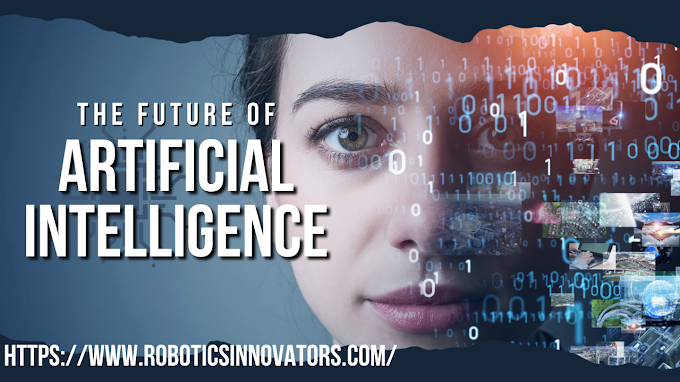The Rat Brain Robot is the most fascinating development to come from the fusion of neuroscience and robotics in recent years. New vistas have been opened in both domains as a result of the convergence of cutting-edge technology with our understanding of the brain. This article explores the characteristics, ramifications, and prospective uses of this amazing invention.
1. A Quick Overview of the Rat Brain Robot
The revolutionary Rat Brain Robot, often known as a "cyber rat," is a technological advancement that unites biological and artificial intelligence. It marks a tremendous advancement in our mission to comprehend and mimic the intricate operations of the brain. The Rat Brain Robot's primary means of control is through biological neural networks taken from a rat's brain.
1.1 Integration of neural networks
The Rat Brain Robot's use of a rat neural network is its key distinguishing characteristic. This neural network's neurons, synapses, and other components closely resemble the rat brain's biological structure. The robotic system is then connected to the network, which governs its operations.
Data Transmission in Real Time
Modern real-time data transfer methods are used to enable a smooth connection between the biological brain network and the robot's body. The robot can respond to environmental cues and adapt to its environment because of this feature's quick information transmission.
Sensory Input and Output (1.3)
The sensors that make up the Rat Brain Robot provide it with sensory information akin to what a real rat would encounter. These sensors include cameras for recording visual information, microphones for recording audio information, and touch sensors. The robot can interact with its surroundings and make decisions based on the information it gets thanks to this sensory input.
1.4 Motor management
Actuators and motors that help the robot move are built into its body. The neural network, which transforms the information from the biological brain into motions like walking, turning, or even problem-solving tasks, is what propels these movements.
2. The Neuroscience Rat Brain Robot
The Rat Brain Robot has important ramifications for neuroscience, providing a rare chance to examine brain activity and plasticity in ways that were previously impractical. The following are some crucial characteristics that make this technology a game-changer in the neuroscience industry:
2.1 Connectivity and Brain Mapping
The neural network of a rat's brain may be studied under controlled laboratory conditions to learn more about the connection and functionality of various brain areas. This knowledge is crucial for comprehending how the brain functions and how different regions coordinate to produce complicated actions.
Neural plasticity, 2.
The Rat Brain Robot can be used by neuroscientists to study neuronal plasticity, or the brain's capacity to modify and rearrange its neural connections in response to fresh experiences. Researchers may learn more about how the brain adapts and learns by subjecting the neural network to various environmental situations and activities.
2.3 Disease Simulation and Drug Evaluation
Additionally, neurological illnesses may be modeled and studied using the Rat Brain Robot. Scientists can study how particular illnesses or injuries impact the robot's behavior by implanting them into the neural network. This offers a trial ground for new medication therapy and interventions.
3. The Robot with a Rat Brain in Robotics
The Rat Brain Robot has a number of aspects that hold promise for the area of robotics, in addition to its importance in neuroscience. The following features of this technology are noteworthy:
3. Independent Learning
The Rat Brain Robot has impressive potential for self-directed learning. The biological neural network may adapt to new circumstances and enhance its performance over time as it interacts with its environment. The development of autonomous learning and decision-making robots will be significantly impacted by this trait.
3.2 Improved Sensory Awareness
The Rat Brain Robot's ability to detect and comprehend its environment in ways that artificial sensors alone cannot imitate is made possible by the integration of biological sensory systems. Applications such as search and rescue, environmental monitoring, and even space exploration can benefit from this improved sensory perception.
3.3 Task Flexibility
The Rat Brain Robot can carry out a variety of duties thanks to its capacity to command a robotic body. This technique paves the way for a new breed of adaptable and agile robots that are capable of maneuvering across complicated settings and performing precise tasks.
4. The Rat Brain Robot's Potential Uses
A wide range of prospective applications across several fields are made possible by the distinctive qualities and abilities of the Rat Brain Robot. Here are some places where this ground-breaking technology may have a big impact:
4.1 Investigation of the Environment
With its capacity to adapt to various situations, the Rat Brain Robot might be extremely useful in exploring and monitoring the environment. These robots may be used in deep-sea research, polar exploration, or even in space, which is difficult for people to reach.
4.2 Medical Attention and Rehab
The Rat Brain Robot might be utilized in the healthcare industry for patient therapy and rehabilitation. These robots, which use cutting-edge neural networks, may help people regain their movement or pick up new abilities following accidents or surgery.
Disaster Response 4.3
The Rat Brain Robot is an excellent choice for situations involving disaster response because of its versatility and sensory sensitivity. These robots might be employed to explore and evaluate disaster-affected areas, find survivors, and offer crucial assistance in circumstances when human involvement is constrained.
4.4 Research and Education
A distinctive platform for instruction and study is provided by the Rat Brain Robot. Students may learn about robotics, neurology, and the possibilities of brain-machine interfaces through its use. It may also be a useful tool for running research and expanding scientific understanding in these areas.
4.5 Exploration of Space
The Rat Brain Robot is a good contender for space exploration because of its versatility. These robots may aid with activities on other planets, carry out tests, and perhaps contribute to the construction of infrastructure for upcoming manned space flights.
4.6 Farming and Agriculture
The Rat Brain Robot might be used in agriculture to monitor crop conditions and practice precision farming. These robots could independently identify pests, illnesses, and irrigation requirements, resulting in more productive and environmentally friendly agricultural methods.
5. Difficulties and Moral Considerations
The Rat Brain Robot has amazing potential, but it also presents a number of difficulties and moral dilemmas:
5.1 Moral Issues
As the technique depends on removing brain networks from living rats, the creation and usage of the Rat Brain Robot pose ethical concerns regarding animal welfare. It is crucial to guarantee the treatment of animals humanely and acquire informed permission for such treatments.
5.2 Regulatory Environment
The use of the Rat Brain Robot and other comparable technology requires thorough regulatory frameworks. These rules should address issues with research, safety, and moral behavior.
5.3 Security and Privacy
As the Rat Brain Robot's sensory perception skills develop, issues with data security and privacy take center stage. In order to avoid potential breaches and exploitation, it is crucial to ensure the proper processing of the data obtained by these robots.
5.4 Technical Restrictions
The Rat's Mind
Like any new technology, robots have their limitations. It might not be appropriate for all applications, and the effectiveness of it will depend on how difficult the task is and how well the neural network performs.
6. Looking Ahead
The Rat Brain Robot is a first step toward a day when robotic systems will be highly flexible and intelligent as a result of the fusion of biological and artificial intelligence. The further advancement of this technology might result in:
Enhancements to Neural Networks
Neuroscientific and biotechnological advances may result in more complex and effective neural networks for directing robotic bodies, increasing their capacities and flexibility.
6.2 Reducing Ethical Issues
Researchers are making a concerted effort to allay any ethical issues raised by the use of neural networks created from animals. In the future, alternatives like artificial neural networks could be more practical.
6.3 Business Applications
The Rat Brain Robot may find economic use in a range of sectors, including healthcare, agriculture, and environmental monitoring. Businesses may use the technology as it develops to deliver creative solutions and streamline processes.
6.4 Integration of Humans
A intriguing area of research is the incorporation of biological neural networks into human-robot systems. Robots that can comprehend and react to human intentions and emotions may be created in the future.
Conclusion
The Rat Brain Robot is a unique example of how neuroscience and robotics can work together to investigate brain function, improve robotic performance, and open up new possibilities in a variety of industries. Technology provides potential for uses in environmental research, healthcare, disaster relief, education, and other fields as it develops. However,For this revolutionary technology to be used in a responsible and compassionate manner, ethical issues and regulatory difficulties must be resolved. The Rat Brain Robot is a symbol of the enormous promise at the nexus of biology and artificial intelligence as well as a scientific accomplishment.








.jpg)




